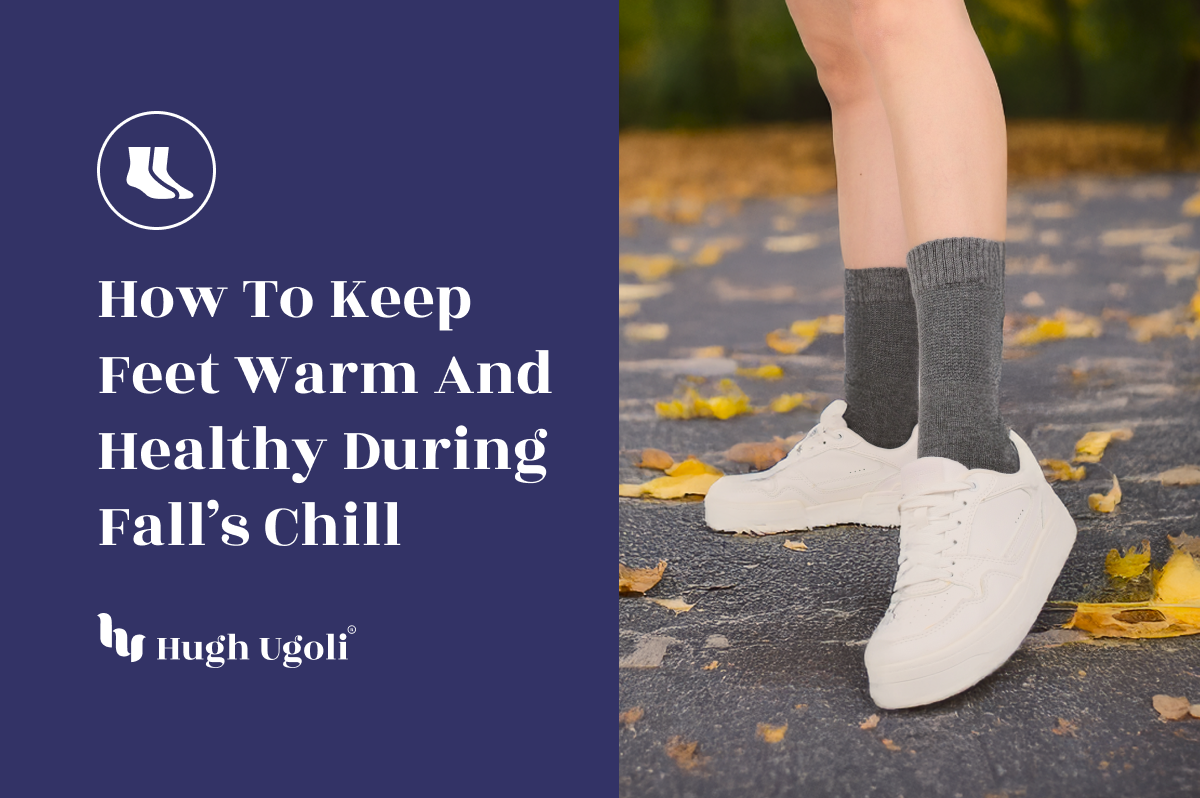As the vibrant colors of autumn leaves give way to colder mornings, it becomes more important than ever to protect your feet. The shift into cold weather can create new challenges for foot health, from poor circulation to increased risk of fungal infections. With the right approach, however, you can keep feet warm and dry while also maintaining strong, healthy skin and nails.
Why Fall Foot Care Matters
Feet are often overlooked in seasonal self-care routines, yet they carry the weight of your entire body every day. Cooler temperatures slow down blood flow, while damp conditions create the perfect environment for bacteria and fungi. Without the right habits and proper footwear, many people experience foot pain, cracked heels, or recurring infections during the autumn months.
The good news is that with a few intentional foot care tips, you can reduce the risk of problems and step confidently into the season.
Choose Moisture Wicking Socks
The first step in autumn foot care is choosing the right socks. Cotton alone can hold onto sweat, leaving your feet cold and damp. Instead, look for moisture wicking socks made from blends of cotton, bamboo, or merino wool. These fabrics help regulate temperature, draw moisture away from the skin, and keep feet warm and dry all day long.
Socks that fit properly also make a difference. Avoid pairs that are too tight, as they can restrict circulation, or too loose, as they may bunch up and cause blisters. Always look for a proper fit when shopping for new socks.
Prioritize Proper Footwear
Even the best socks can’t fully protect you if your shoes aren’t suited for fall conditions. Proper footwear should:
-
Provide insulation against the chill
-
Offer enough room in the toe box to prevent ingrown toenails
-
Support the arch and heel to reduce strain
-
Be water-resistant for rainy or damp days
Pairing durable shoes with high-quality socks ensures your feet are shielded from the season’s unpredictable weather.

Practice Good Foot Hygiene
The cornerstone of keeping feet healthy is practicing good foot hygiene. Simple daily habits can make all the difference:
-
Wash your feet daily with warm water and mild soap
-
Dry thoroughly, especially between the toes, to prevent fungal infections
-
Moisturize to prevent dryness and cracking, but avoid applying lotion between the toes
-
Trim toenails straight across to minimize the chance of ingrown toenails
Consistent hygiene routines not only improve comfort but also contribute to long-term foot health.
Inspect Your Feet Regularly
Regular self-checks are an essential part of autumn foot care tips. Cold weather can sometimes mask sensations, making it harder to notice small injuries. Be sure to inspect your feet regularly for:
-
Cuts, blisters, or sores
-
Changes in skin color or temperature
-
Signs of swelling or poor circulation
Catching problems early reduces the risk of them developing into more serious conditions, especially for people managing diabetes or circulatory issues.
Support Circulation During Cold Weather
Healthy blood flow is vital for keeping feet comfortable during the fall. When circulation is compromised, feet are more vulnerable to coldness, numbness, and discomfort. You can improve circulation by:
-
Wearing proper fit socks that don’t bind at the top
-
Taking short walks to stimulate blood flow
-
Stretching or doing simple foot exercises at home
-
Elevating feet when resting to reduce swelling
These small actions help support overall foot health while making chilly days more bearable.
Extra Care for Winter Transition
As autumn leads into winter, it’s wise to prepare for harsher conditions with a few winter foot care habits:
-
Swap lightweight socks for wool or thermal blends for extra insulation
-
Rotate shoes to ensure they dry completely between wears
-
Invest in socks designed for both warmth and circulation support
These steps help you stay ahead of the season and avoid common cold-weather problems.
Wrapping Up
Taking care of your feet during the fall season is about more than just staying comfortable—it’s about long-term health. By choosing moisture wicking socks, wearing proper footwear, practicing good foot hygiene, and remembering to inspect your feet regularly, you’ll not only keep feet warm and dry but also reduce the risk of infections, pain, and circulation issues.
For more practical advice, explore our blog The Importance of Comfortable Socks for School Kids—while it focuses on children, many of the same principles apply to building a foundation of comfort and health for every age.
















